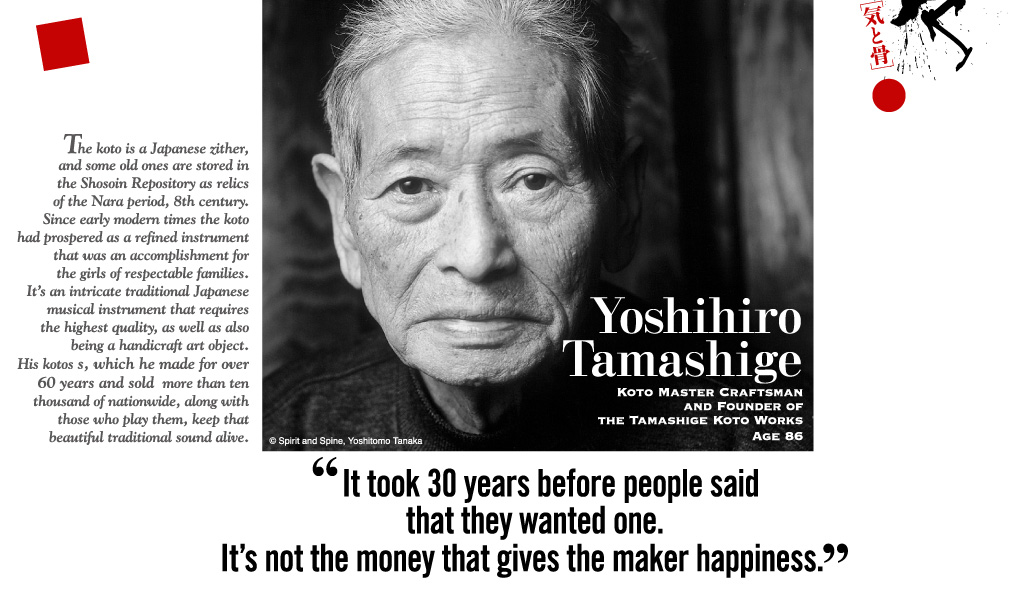Funakijuku was a place that prospered due its important position on the old Sanyodo Road. In this old commercial town, his grandfather established a traditional Japanese musical instrument shop in 1894, which was where he was born. In the summer of his 15th year, there was an air raid on the town, due to it being located in the neighboring area of the mining and manufacturing city of Ube, which resulted in the total destruction of the shop. After the war, his older brother inherited the shop, and he started his own koto manufacturing business when he was 24 years old. He had a wealth of knowledge about musical instruments and a discerning, expert eye. Nonetheless entering the koto manufacturing business as a new company was an extremely difficult path to take. Sales didn’t take off as hoped, and he spent many years sacrificing his own financial rewards in favor of buying stock and paying the wages of his craftsmen.
However the day came when the years of devotion to his handiwork reaped its reward. Kiyoko Miyagi, a living national treasure, came to Ube to give a public performance and he had a chance to have her play one of his instruments, which gave him his big break. It’s a valuable koto that was highly rated and received her seal of approval. He turned down a large amount of money from a person wanting to purchase it and instead donated it to the Michio Miyagi Memorial Hall. There was also a koto that was requested by the Meiji Shrine, for which he cleansed himself and devoted all his attention to before presenting it to them.
His local shrine, Ogimorisumiyoshigu, is ancient and has a history that dates back to late 4th century, the reign of Empress Jingu. He was frantic in his efforts to fundraise for the construction of a new main shrine for it, as he was the originator of the idea and was desperate to serve god. In 1998, it was perfectly restored using Japanese cypress trees thoroughly. He thanked his good fortune that he was able to accomplish what he had to do in his lifetime. In recent years he’s devoted himself to caring for his wife, and he had his own crisis when he suffered from an aortic aneurysm, but when he reflects back on it, the old koto master craftsman credits his survival on divine protection.







































































































